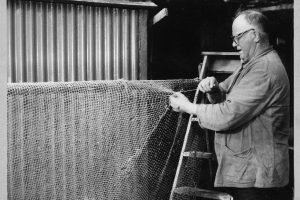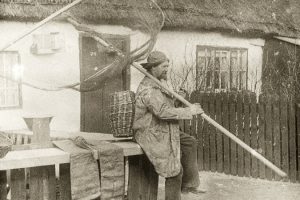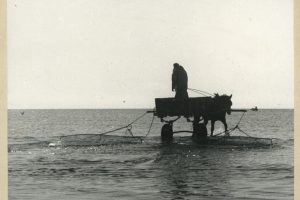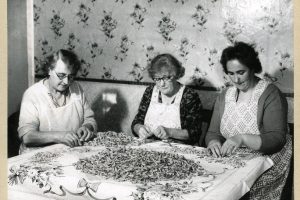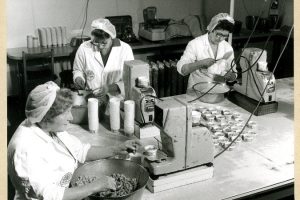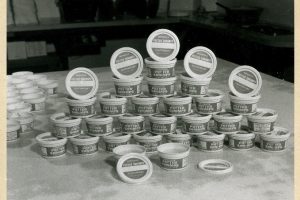This week’s #MyLocalMuseum theme is ‘Food & Drink’ and we are sharing photographs of Southport’s historic shrimping industry from The Atkinson’s collection.
As the land around Southport has always been no use for farming, the sea was used as a source of sustenance and income instead. Most of the early fishing was done from the beach with nets and lines fixed to stakes in the sand. A variety of fish was caught including plaice, sole, cod, herring and mackerel. There were also plentiful supplies of brown shrimps and a shrimping industry grew up around the area.
Shrimpers often made their own equipment, here we see work being done on a shrimping net and a Basket or ‘Leap’. These Leaps were traditionally made with willows and used to carry shrimps home.
These nets and leaps were used in the shrimping method known as Putting. This meant pushing forward a large net along the seabed. The contents of the net are then sorted and the shrimps are put in the leap carried on the shrimpers back. A basket of shrimps could weigh as much as 40 kilograms (over 6st.).
Later, small boats with red sails (known as nobbies), allowed the fishermen to trawl in deeper water. This was called ‘boat shanking’. From the 1800s, ‘cart shanking’ became popular because it was cheaper to buy a shrimping cart than a boat and a cart could travel further and carry more shrimp than a man on foot.
The shrimps were boiled alive and then shilled (shelled). This entailed twisting the head off and using the thumb and forefinger to press out the meat. It was essential to do this as quickly as possible before the shrimps went off.
After the men brought the shrimp back from the sea the rest of the process was commonly carried out by women and children. Including weighing and packaging into the finished product: Potted Shrimp.
Written by Jenny Cope, Museum Futures Trainee
For more on Southport’s history of shrimping and the shrimping cart in The Atkinson’s collection visit this post from 2014, when the BBC’s Countryfile came to film.
You can also watch the behind the scenes video on YouTube.
Posted on 9 March 2021 under General news, Museum





